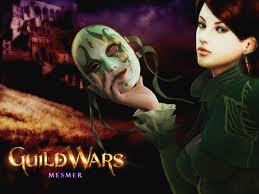110 posts
• Page 3 of 5 • 1, 2, 3, 4, 5
studies are spreading misinformation
-

Noraima Vega - Posts: 3467
- Joined: Wed Jun 06, 2007 7:28 am
I find it odd that people just seem averse to the whole field of medicine. Like my sister doesn't like medicine. She says she feels worse when she takes it because she doesn't trust it. Why? This isn't some mystery story where the corporations are all maligned against the public spoon-feeding us poison and raking in the cash.
It seems people will believe horse[censored] if it has numbers. The worst part is, we use it as an agent to further the cycle. But stats are always something you should check. Hell, if you feel like something pertains to you, you should effing double-check it. The whole Autism is linked to Immunization was, IMO a HUGE scandal. But there are still people who wholeheartedly believe it. I guess I'm saying, numbers fool us, but it is our own friggin dogmatic belief in the factual presentation of anything that will continue to drag us down.
It haunts us in the form of babies who will never get immunized due to fear of autism...
It seems people will believe horse[censored] if it has numbers. The worst part is, we use it as an agent to further the cycle. But stats are always something you should check. Hell, if you feel like something pertains to you, you should effing double-check it. The whole Autism is linked to Immunization was, IMO a HUGE scandal. But there are still people who wholeheartedly believe it. I guess I'm saying, numbers fool us, but it is our own friggin dogmatic belief in the factual presentation of anything that will continue to drag us down.
It haunts us in the form of babies who will never get immunized due to fear of autism...
While I agree with you on the whole autism link with vaccines to be a huge load of bs, western medicine has a lot of flaws. I could go on forever about all of this, but I spent hours with different doctors, getting tests, trying new medications, etc because I couldn't eat more then a few hundred calories a day. Not one doctor told me that cutting out dairy could be really helpful, they just gave me the newest anti-nauseant, antacid, even tried ssris and benzos. My point is that I've never had a medication work for me, not for anxiety, depression or ibs. I'm not saying that our system of medicine is useless, but there are a lot of problems with it, that aren't helped by the greedy drug companies.
-

Matt Fletcher - Posts: 3355
- Joined: Mon Sep 24, 2007 3:48 am
And then there are those of us who swing the opposite way and begged doctors to give their children Small Pox vaccine, but were denied because we "eradicated" the disease years ago. Well, we didn't, and I wouldn't be surprised if we had some kind of sweeping plague of Small Pox sometime in the future, and I am the last generation to have the vaccine. Feel sorry for those after me who might fall victim to it.
My understanding is that the refusal to offer individuals the smallpox vaccine is due to the vaccine having potentially serious side effects (including permanent neurological damage and heart problems). Additionally, as the vaccine uses a fully functional (non-attenuated) virus it's also possible for people who receive the vaccine to infect people they come in contact with, thus the risk of the aforementioned side effects is not simply limited to those who choose to get the vaccine. Now, when smallpox was still around the risk of the side effects of vaccination were far outweighed by the risk posed by smallpox itself, but with no known cases of smallpox since 1978 the risks associated with giving someone the vaccine (risks to both the person and everyone who comes in contact with them) far outweigh the risks posed by smallpox, at least in the judgment of numerous doctors and medical researchers who have studied the matter.
-

luke trodden - Posts: 3445
- Joined: Sun Jun 24, 2007 12:48 am
While I agree with you on the whole autism link with vaccines to be a huge load of bs, western medicine has a lot of flaws. I could go on forever about all of this, but I spent hours with different doctors, getting tests, trying new medications, etc because I couldn't eat more then a few hundred calories a day. Not one doctor told me that cutting out dairy could be really helpful, they just gave me the newest anti-nauseant, antacid, even tried ssris and benzos. My point is that I've never had a medication work for me, not for anxiety, depression or ibs. I'm not saying that our system of medicine is useless, but there are a lot of problems with it, that aren't helped by the greedy drug companies.
I had a horrible backache that kept getting worse and worse. (tailbone) To the point that I couldn't work anymore. I went to several doctors, they threw pain medicine samples at me. I gave them to my step-son. I finally ended up at the chiropractor. He asked me if I had fallen in the last few months. Well, by golly I had! I had totally forgotten about it, but 3 months prior I had slipped on my front porch and fallen on my left butt cheek, knocking my left hip 1/4-1/2 an inch out of socket. Not one of the 3 doctors asked me if I had fallen, not one offered an x-ray. They just threw pain meds at me and sent me on my merry way. I wa popped back into place by the chiropractor, had 11 more visits paid for but only used 10 because I was fine again. Tell me I wasn't pissed at 3 doctors. <_<
My understanding is that the refusal to offer individuals the smallpox vaccine is due to the vaccine having potentially serious side effects (including permanent neurological damage and heart problems). Additionally, as the vaccine uses a fully functional (non-attenuated) virus it's also possible for people who receive the vaccine to infect people they come in contact with, thus the risk of the aforementioned side effects is not simply limited to those who choose to get the vaccine. Now, when smallpox was still around the risk of the side effects of vaccination were far outweighed by the risk posed by smallpox itself, but with no known cases of smallpox since 1978 the risks associated with giving someone the vaccine (risks to both the person and everyone who comes in contact with them) far outweigh the risks posed by smallpox, at least in the judgment of numerous doctors and medical researchers who have studied the matter.
Yeah, well when they have a huge outbreak, they can explain all that to the survivors of the dead.
-

Alexxxxxx - Posts: 3417
- Joined: Mon Jul 31, 2006 10:55 am
Yeah, well when they have a huge outbreak, they can explain all that to the survivors of the dead.
And if they did give people the vaccine then they'd have to explain to family members why some of those people ended up brain-damaged or worse, or explain to another person's family why their loved one suffered from complications of cowpox due to one of their friends having chosen to get a smallpox vaccine. Medical decisions can often have dire what-if scenarios regardless of which way the decision goes. Part of the job of medical professionals and researchers is to assign actual probabilities to those what-if scenarios as well as take into account the scope of the potential consequences, then present this anolysis to patients in a clear manner, or in cases where the anolysis of the risks very heavily falls against performing a procedure telling the patient that that procedure is not an option. Naturally this results in some rather unhappy people, although in cases where the actual data heavily favors not undertaking a procedure, particularly when the consequences can affect people beyond the patient, I'd much prefer that the decision be made by someone who's seen and understood the data rather than by someone deciding mostly based on emotions.
-

Sherry Speakman - Posts: 3487
- Joined: Fri Oct 20, 2006 1:00 pm
Sometimes, not all that much. Google for Dr. John Ioannidis -- this guy has made a career of going around and informing the public when people do things like screen a disease against thousands of genes and, by sheer chance, hit a type 1 error in the process that they think is significant. No malicious intent, it's just honestly not knowing any better.
Not only is this paper a complete rehash of what any good statistician already knows, it's basically outlined like this:
"Math... basic stuff... math... generalization... math... money is evil... math... people are evil by repressing refutation of their studies... math..." (note: Obvious hyperbole is obvious.)
Basically his overall point is this: Large studies are good. Randomized studies are good. Multiple, independent studies that examine the same idea / hypothesis = great.
... so... what just about every researcher already knows.
(Edit: Though, as you mentioned, Dr. Ioannidis may be writing this for the layman... and if he is... well, it's not likely coming across well.)
Also, as promised, here is one study that talks about the amount of exposure children have to endotoxins and other such things and how it may reduce the level of allergic reactions in children:
Schram, D., Doekes, G., Boeve, M., Douwes, J., Riedler, J., Ublagger, E., & ... Brunekreef, B. (2005). Bacterial and fungal components in house dust of farm children, Rudolf Steiner school children and reference children--the PARSIFAL Study. Allergy, 60(5), 611-618. Retrieved from EBSCOhost.
-

JESSE - Posts: 3404
- Joined: Mon Jul 16, 2007 4:55 am
It's been studied that many studies can be misleading. Though not all of them are from some vast conspiracy to lie about everything. Sometimes it can be simple forgetfulness, to error in the design of the test, all the way to the extreme end of the spectrum like fraudulent data. It's a well known fact that generally as a new subject begins to see study it's going to take some time before we sift through the [censored] studies and get to the real meat and potatoes of the data that does not in fact lie. This can of course take many years, and in that time many horrible things can happen and be passed off as fact. It's just an unfortunate side effect of scientists being human beings and not god like beings descending from the heavens with every last answer to everything ever. Though I'm sure they might get there someday.
-

Solène We - Posts: 3470
- Joined: Tue Mar 27, 2007 7:04 am
Yeah, like earth's only got http://www.youtube.com/watch?v=D1zuAQAhhMI
-

Schel[Anne]FTL - Posts: 3384
- Joined: Thu Nov 16, 2006 6:53 pm
I think a lot of it also boils down to the agenda of the study team/statistics team. "4 out of 5 dentists recommend (insert toothpaste brand)."
So...did they ask 5 dentists in the same office? Different offices? Is the dentist getting a kickback from the toothpaste company? Is the toothpaste surveyor getting free dental in exchange for ?
In this case it's a company trying to sell a product. I can remember different years hearing "Don't eat eggs! They're bad for you!" A year or 2 down the road, "Eat lots of eggs! They're great for you!" Same goes for wheat, dairy, etc. etc. I just eat what the heck I want when I want, and they can't tell me what to do, they're not the boss of me. :unsure:
So...did they ask 5 dentists in the same office? Different offices? Is the dentist getting a kickback from the toothpaste company? Is the toothpaste surveyor getting free dental in exchange for ?
In this case it's a company trying to sell a product. I can remember different years hearing "Don't eat eggs! They're bad for you!" A year or 2 down the road, "Eat lots of eggs! They're great for you!" Same goes for wheat, dairy, etc. etc. I just eat what the heck I want when I want, and they can't tell me what to do, they're not the boss of me. :unsure:
-

stacy hamilton - Posts: 3354
- Joined: Fri Aug 25, 2006 10:03 am
I had a horrible backache that kept getting worse and worse. (tailbone) To the point that I couldn't work anymore. I went to several doctors, they threw pain medicine samples at me. I gave them to my step-son. I finally ended up at the chiropractor. He asked me if I had fallen in the last few months. Well, by golly I had! I had totally forgotten about it, but 3 months prior I had slipped on my front porch and fallen on my left butt cheek, knocking my left hip 1/4-1/2 an inch out of socket. Not one of the 3 doctors asked me if I had fallen, not one offered an x-ray. They just threw pain meds at me and sent me on my merry way. I wa popped back into place by the chiropractor, had 11 more visits paid for but only used 10 because I was fine again. Tell me I wasn't pissed at 3 doctors.
That must have been really frustrating! I'm lucky that I didn't have to spend any money on all my bs I went through because I live in Canada, but I've heard of the prices in the states for painkillers/doctor visits and that's just ridiculous. I still don't understand why so few mds refuse to look at the body as a whole.
-

Calum Campbell - Posts: 3574
- Joined: Tue Jul 10, 2007 7:55 am
That must have been really frustrating! I'm lucky that I didn't have to spend any money on all my bs I went through because I live in Canada, but I've heard of the prices in the states for painkillers/doctor visits and that's just ridiculous. I still don't understand why so few mds refuse to look at the body as a whole.
Yeah, it was really annoying, and pissed me off. They are either too backed up with patients to have a grasp of the personal touch, or they are just too reliant on pharmaceuticals to care. I think i'ts actually a bit of both, but I was surely appreciative of the chiropractor when he found and FIXED my problem. The doctors would have just kept throwing meds at me. Which is kind of funny in a way, because I'd never been to a chiropractor prior to this, and was very skeptical and had reservations about the practice. I don't think they are better than doctors, but he was definitely interested in finding the cause and treating that, than just treating symptoms and throwing meds at it.
-

x a million... - Posts: 3464
- Joined: Tue Jun 13, 2006 2:59 pm
And then there are those of us who swing the opposite way and begged doctors to give their children Small Pox vaccine, but were denied because we "eradicated" the disease years ago. Well, we didn't, and I wouldn't be surprised if we had some kind of sweeping plague of Small Pox sometime in the future, and I am the last generation to have the vaccine. Feel sorry for those after me who might fall victim to it.
Oh wait, I'm a Nurgle cultist. Nevermind!
-

Blackdrak - Posts: 3451
- Joined: Thu May 17, 2007 11:40 pm
I know, I want my smallpox vaccine. Hell, I'm open to practically any vaccine!
I seriously wanted my kids vaccinated, and would have signed a waiver, but they told me to take a long walk on a short pier.
-

Inol Wakhid - Posts: 3403
- Joined: Wed Jun 27, 2007 5:47 am
At least I still got a polio vaccine before they stopped that.
-

Alberto Aguilera - Posts: 3472
- Joined: Wed Aug 29, 2007 12:42 am
How did I double with a post in between?
Where are you that you don't get Polio vaccinations?
Where are you that you don't get Polio vaccinations?
-

Neko Jenny - Posts: 3409
- Joined: Thu Jun 22, 2006 4:29 am
Illinois, near Chicago. A bunch of students in grades under mine said they weren't vaccinated during the topic of Polio in US history.
-

.X chantelle .x Smith - Posts: 3399
- Joined: Thu Jun 15, 2006 6:25 pm
Illinois, near Chicago. A bunch of students in grades under mine said they weren't vaccinated during the topic of Polio in US history.
That's odd. I thought it was standard practice to get Polio immunizations in America. :mellow:
-

Carlos Rojas - Posts: 3391
- Joined: Thu Aug 16, 2007 11:19 am
Illinois, near Chicago. A bunch of students in grades under mine said they weren't vaccinated during the topic of Polio in US history.
That's definitely a bit odd, as it's standard practice throughout the US for children to be vaccinated against polio a few months after birth, then receive a booster when they're around 5 years old. Hopefully the students who said they weren't vaccinated were just misinformed.
-

Kat Ives - Posts: 3408
- Joined: Tue Aug 28, 2007 2:11 pm
Hmm, I should ask my siblings friends and my parents.
-

WYatt REed - Posts: 3409
- Joined: Mon Jun 18, 2007 3:06 pm
About the original topic of the subject:
1/ Statistics don't lie. The way people read statistics is another thing. For example, the measurement of anything has no value if you cannot attach an uncertainty to it. You need to be also very careful with correlated events. This is a fashion with bio-medical student to produce pseudo-epidemiologic studies. But they forget completly the correlated events. I can say that, in Europe, red hair males are higher consumer of beer than black hair males. Fine. But is it due to the colour of the hair or rather to the fact that the black hair are living in southern Europe and red hair in Northern Europe. And Southern Europe can grow graqes and make wine while northern Europe makes beer ! So stats are not wrong. But the interpretation is too often biaised or short-sighted.
We, humans, we like to take decisions based on true/false although we know intuitively there is an uncertainty attached to it. Our brain is design to incorporate this uncertainty and decide what is the optimal threshold to chose the "true".
However, when we present studies to public, even if we attach uncertainties to the results, even if the correlations are direct, there will be always a journalist to present the result in an 'abridged' manner, in order to make it look more spectacular. This is a third reason that makes the presentation of these studies shocking.
2/ Guys, don't neglect polio, it's a terrible sickness. In Nigeria, some stupid fundamentalists have propagated the idea that polio vaccination was to sterilize muslim women. Results, the eradication program has been slowed down and there are a lot of cases of polios, even spreading to neighbouring countries. Don't worry, in order to stay equal in stupidity, on the christian side, some pastors started to say that periodic serviette and condems were infected with HIV...
With the travels througout the world, you cannot tell that you won't be in contact with polio, take care of you.
1/ Statistics don't lie. The way people read statistics is another thing. For example, the measurement of anything has no value if you cannot attach an uncertainty to it. You need to be also very careful with correlated events. This is a fashion with bio-medical student to produce pseudo-epidemiologic studies. But they forget completly the correlated events. I can say that, in Europe, red hair males are higher consumer of beer than black hair males. Fine. But is it due to the colour of the hair or rather to the fact that the black hair are living in southern Europe and red hair in Northern Europe. And Southern Europe can grow graqes and make wine while northern Europe makes beer ! So stats are not wrong. But the interpretation is too often biaised or short-sighted.
We, humans, we like to take decisions based on true/false although we know intuitively there is an uncertainty attached to it. Our brain is design to incorporate this uncertainty and decide what is the optimal threshold to chose the "true".
However, when we present studies to public, even if we attach uncertainties to the results, even if the correlations are direct, there will be always a journalist to present the result in an 'abridged' manner, in order to make it look more spectacular. This is a third reason that makes the presentation of these studies shocking.
2/ Guys, don't neglect polio, it's a terrible sickness. In Nigeria, some stupid fundamentalists have propagated the idea that polio vaccination was to sterilize muslim women. Results, the eradication program has been slowed down and there are a lot of cases of polios, even spreading to neighbouring countries. Don't worry, in order to stay equal in stupidity, on the christian side, some pastors started to say that periodic serviette and condems were infected with HIV...
With the travels througout the world, you cannot tell that you won't be in contact with polio, take care of you.
-

Claire Lynham - Posts: 3432
- Joined: Mon Feb 12, 2007 9:42 am
If opinion polls or social studies were scientific, there would be no "margin of error". The results would be concrete, and repeatable. And, there would be no conflicting results between multiple studies conducted on the same subject.
I hate to be the one to break this to you, but practical experiments always have some kind of associated uncertainty value, or "margin of error". Even things like a simple pendulum will be affected to some degree by experimental/random error.
Yeah, well when they have a huge outbreak, they can explain all that to the survivors of the dead.
That's what I've always said about the extra-terrestrially-triggered zombie outbreak! Obviously we should all wear tinfoil hats everywhere we go. :rolleyes:
I find it odd that people just seem averse to the whole field of medicine. Like my sister doesn't like medicine. She says she feels worse when she takes it because she doesn't trust it. Why? This isn't some mystery story where the corporations are all maligned against the public spoon-feeding us poison and raking in the cash.
Your sister's probably a communist, best turn her in.
-

Princess Johnson - Posts: 3435
- Joined: Wed Feb 07, 2007 5:44 pm
Hey! I haven't even turned 45 yet! :slap:
Sorry. :teehee:
-

sally R - Posts: 3503
- Joined: Mon Sep 25, 2006 10:34 pm
I listen to a great podcast called "Skeptics with a K", where they often discuss studies that make it into the news and how they are reported (they talk about the anti-vaccination crowd a lot too). I think my favourite was a headline that went along the lines of "FULL FRY-UP BEST BREAKFAST FOR A HEALTHY LIFESTYLE" or something. They were basing it off a study where mice were given a certain kind of protein which can be found in bacon (IIRC) and seeing how much they ran about and when they fell asleep. It's amazing how certain studies are reported lol.
They also look at how certain products have been "scientifically proven". I think the most recent was a device which repels spiders - I fell for that one and spent a fair bit of money on them, so a big facepalm for me!
I was taught about causation and correlation at school (I think they are the right words - it's been a while!), and my teacher described it like this. A study shows that more toilets caused better grades. This was because kids who lived in a house with 5 toilets had better grade scores than those who only had one. Really, this could mean that the kids who lived in houses with 5 toilets were probably from richer families than those with just one, and so maybe went to private schools, had extra tuition etc. So even though there was a larger number of toilets in the houses of successful students, it probably wasn't down to them having a selection of places where they could do their business.
They also look at how certain products have been "scientifically proven". I think the most recent was a device which repels spiders - I fell for that one and spent a fair bit of money on them, so a big facepalm for me!
I was taught about causation and correlation at school (I think they are the right words - it's been a while!), and my teacher described it like this. A study shows that more toilets caused better grades. This was because kids who lived in a house with 5 toilets had better grade scores than those who only had one. Really, this could mean that the kids who lived in houses with 5 toilets were probably from richer families than those with just one, and so maybe went to private schools, had extra tuition etc. So even though there was a larger number of toilets in the houses of successful students, it probably wasn't down to them having a selection of places where they could do their business.
-

Lil'.KiiDD - Posts: 3566
- Joined: Mon Nov 26, 2007 11:41 am
About the original topic of the subject:
1/ Statistics don't lie. The way people read statistics is another thing. (...)
1/ Statistics don't lie. The way people read statistics is another thing. (...)
This is true.
Serious studies are also totally true. With their conditions and constraints.
The problem is that the media is generalizing the results of the study. They tell you only a part of the truth.
There is absolutely nothing bad about scientific studies. Just don't listen to any media, read the study provided by the university. Then you know whats going on.
PS: Never listen to any media, they are often lying. In areas of my knowledge, I hardly hear (the whole) truth in media.
-

TASTY TRACY - Posts: 3282
- Joined: Thu Jun 22, 2006 7:11 pm
...
If you believe that Government funded studies are 'cooked', I suspect that there's little that can be done to change your mind. That being said, I hope you understand that the vast majority of research done in a University setting in the United States is in some way funded through government grants. This includes (I apologize for reusing an Engineer example, that is my background) some of the leading Structural Modeling software and the research that the US highway system is based off of. To be honest with you, I am far more likely to trust a government funded study than a study conducted by a research group that depends on Corporate funding. Mainly because Corporate funds are often tied to a result. If you don't get the right ones, your funding is gone. Government funding is less susceptible to that in my experience.
If you believe that Government funded studies are 'cooked', I suspect that there's little that can be done to change your mind. That being said, I hope you understand that the vast majority of research done in a University setting in the United States is in some way funded through government grants. This includes (I apologize for reusing an Engineer example, that is my background) some of the leading Structural Modeling software and the research that the US highway system is based off of. To be honest with you, I am far more likely to trust a government funded study than a study conducted by a research group that depends on Corporate funding. Mainly because Corporate funds are often tied to a result. If you don't get the right ones, your funding is gone. Government funding is less susceptible to that in my experience.
You're right, a privately funded study is just as potentially inaccurate as a government funded one. But the government will cut it's funding, too... if the results of a given study doesn't conform to the "moral standards" we are "encouraged" to live by.
I've just seen them shot down too many times. And the fact that the results too often (ie: always) support the opinion of the group conducting the study, or otherwise mislead the general population into thinking they are somehow "not normal" or their opinion is otherwise un-acceptable if they don't think the same thing "98% of the average American" thinks... "You're not one of the undesirable 2%, ARE YOU?!!!"
And your engineering anology works too. Those can be spoofed as well, only the consequences for doing so are much more harsh... people may die. Surveys aren't a matter of life and death. If a group gets busted "cooking" the numbers, people may point at them and laugh, and they loose their grants. But all they have to do is change their name, and reapply for funding... no one goes to prison over it.
My whole point is, this stuff is too unreliable and susceptible to manipulation to be taken as seriously as it is. If it walks like a lie, and quacks like a lie...let's just K.I.S.S. and call it a lie.
-

Dean - Posts: 3438
- Joined: Fri Jul 27, 2007 4:58 pm
110 posts
• Page 3 of 5 • 1, 2, 3, 4, 5
